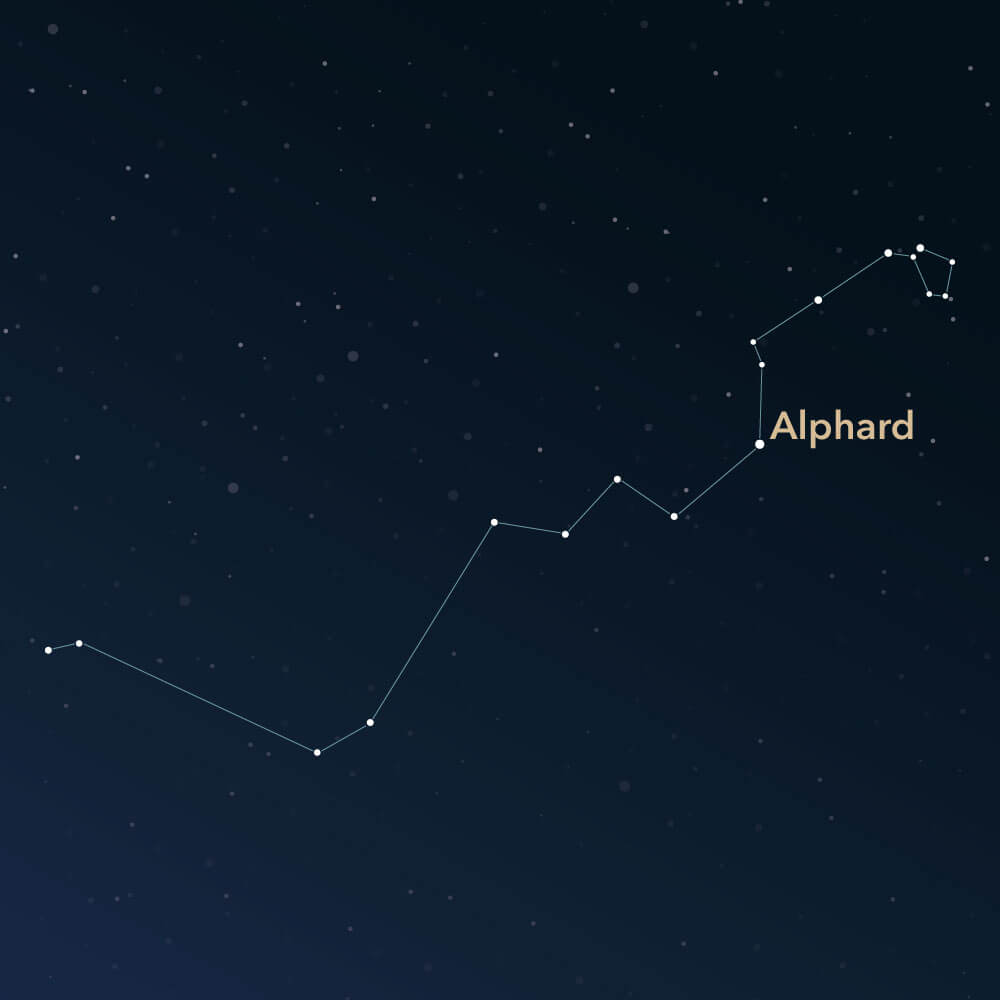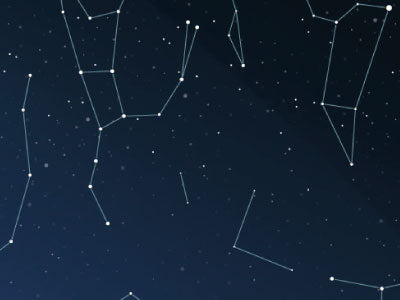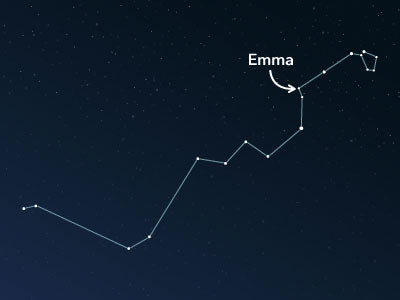The constellation Hydra
Characteristics
- Other names / Symbolism
- Sea Serpent, Water Snake
- Hemisphere
- Both Hemispheres
- Visibility
- January - May
- Area
- 1303 deg²
- Brightest star
- Alphard (HIP number 46390)
- Specialties
- Galaxies, planetary nebula, globular clusters, open star cluster

The Hydra, commonly known as Sea Serpent or Water Snake, is a very large constellation located along the celestial equator. It is one of the 48 constellations described by the Greco-Roman astronomer Claudius Ptolemy in ancient times. In its sky area are several interesting deep-sky objects.
Hemisphere, visibility, and area
The Aquarian constellation spans both hemispheres with an area of approximately 1,303 square degrees. This makes it the largest star constellation in the entire night sky.
Due to its location, it is worldwide visible. It can be observed between latitudes 53° N and 84° S. In the northern hemisphere, it can be seen entirely from all regions south of, for example, Bremen in Germany, Birmingham in England, or Dublin in Ireland. South of the equator, it can be watched as far south as deep into the Antarctic.
The best months to observe Hydra are from January to May. However, despite its vast expanse, there aren't many bright stars in its area. The most shining star is Alphard (Latin: α Hydrae, Alpha Hydrae), with an apparent magnitude of around 1.98. It is an orange giant star that has about 400 times the luminosity of our sun and is located approximately 180 light-years away.
Hydra is surrounded by a multitude of other constellations in the night sky. Its most famous neighbors are Leo, Cancer, Libra, and Virgo. The constellations Crater, Sextans, Canis Minor, Monoceros, Antlia, Centaurus, and Corvus also border Hydra. Additionally, the constellations Puppis and Pyxis are located nearby.
Specialties in the constellation
In the region of Hydra, there are several galaxies and globular clusters, as well as a planetary nebula and an open star cluster.
The brightest object is the open star cluster NGC 2548, also known as M48 (Messier 48). It has an apparent magnitude of about 5.5 and is located at an estimated distance of 2,500 light-years. Its age is around 300 million years. Under good conditions, meaning dark nights without much light pollution, the star cluster can be observed with the naked eye.

Mythology
Two stories from Greek mythology are associated with the Hydra constellation.
The first is about Apollo, who sent his raven with a cup to fetch water from a spring. However, on the way, the raven was distracted by fruit and delayed in fulfilling his task. To appease Apollo, the raven came up with an excuse: he claimed that at the spring, he had found a water snake that he killed, and which had prevented him from accessing the water for days. Apollo saw through the lie and enraged, set the three involved creatures in the sky as a warning to all liars.
The more well-known version of the Hydra myth is associated with the legendary hero Hercules. One of his twelve tasks was to defeat the nine-headed monster of Lerna, the Hydra. After driving her into her lair with burning arrows, Hercules attacked her with his sword. For every head he cut off, two more grew back. The situation became even more precarious when a crab sent by Hera, came to the Hydra's aid. Eventually, Hercules managed to defeat both the crab and the Hydra with the help of his nephew Iolaus. At Hera's request, Zeus placed the water snake and the crab in the night sky as constellations.
PublishedRead more interesting articles

An overview of all 88 constellations
Learn more about all 88 constellations and read interesting information about the mythology, visibility, and features.

Planetarium App
Discover the night sky with our planetarium app!
Available for iOS and Android.

Name a star in the constellation Hydra
Name a star in a constellation and create something that lasts for eternity.